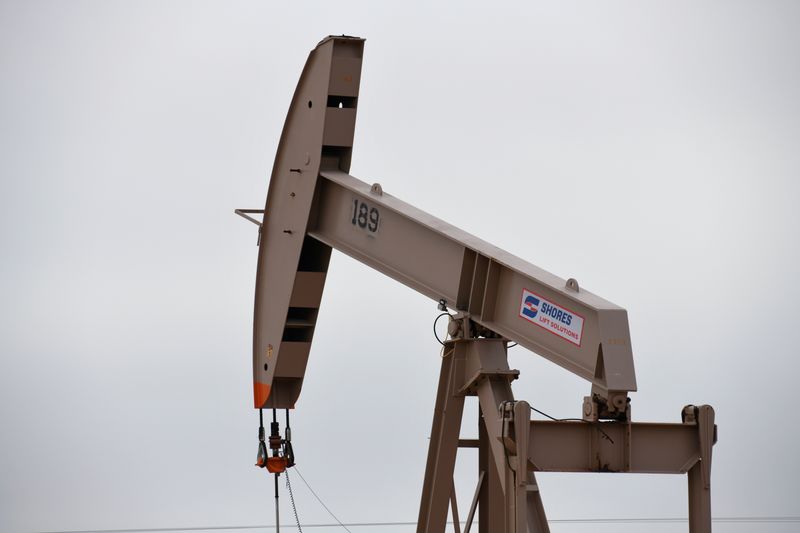
By Georgina McCartney
HOUSTON (Reuters) -Activity in the U.S. oil and gas sector in Texas, Louisiana and New Mexico contracted slightly in the second quarter of 2025, the Dallas Fed survey showed on Wednesday, as firms grappled with a jump in steel tariffs.
The decrease comes after U.S. President Donald Trump, who has encouraged U.S. producers to "drill, baby, drill," doubled tariffs on steel and aluminum imports to 50% from 25% in early June. Roughly a quarter of all steel used in the U.S. is imported, while half of all aluminum used in the U.S. is imported.
Investors have navigated significant volatility in the second quarter, with U.S. crude futures dropping to a four-year low of $57.13 a barrel on May 5 and then gaining to $75.14 on June 18, the highest level since January, according to data from LSEG.
As prices dropped, oil and gas production decreased slightly last quarter, the Dallas Fed survey showed.
Almost half of the executives surveyed expect to drill fewer wells in 2025 than they planned at the start of the year, while a quarter said they expect the number of wells they drill to decrease significantly.
Twenty-seven percent of firms said the recent jump in U.S. steel import tariffs to 50% from 25% will lead to them drilling slightly fewer wells.
"It’s hard to imagine how much worse policies and D.C. rhetoric could have been for U.S. exploration and production companies," an exploration and production executive said. "We were promised by the administration a better environment for producers but were delivered a world that has benefited OPEC to the detriment of our domestic industry."
The Organization of the Petroleum Exporting Countries and its allies have made a radical change in policy this year, ramping up output as the group looks to regain market share after several years of production cuts.
"The Liberation Day chaos and tariff antics have harmed the domestic energy industry," another executive said. "Drill, baby, drill will not happen with this level of volatility. Companies will continue to lay down rigs and frack spreads."
Results from the Dallas Fed contrast with recent data released by the Energy Information Administration. U.S. crude oil production hit a record 13.47 million barrels per day in April, up from 13.45 million bpd in March, according to data released on Monday by the EIA as part of its Petroleum Supply Monthly series.
’A LENGTHY DOWNTURN’
Costs among oilfield service firms rose at a slightly faster pace in the second quarter compared with the first quarter, the survey showed.
The rising costs from steel and aluminum tariffs are being passed on to customers, an oilfield service firm executive noted.
Meanwhile, more than half of executives expect slightly less customer demand over the next year as the hike in steel import tariffs is set to weigh on oilfield service demand.
"The numerous negative tailwinds — tariffs, oversupply of oil, consolidation and turmoil surrounding economic policy — will have significant impact on the domestic energy sector," an oilfield service firm executive said. "A lengthy downturn is the logical outcome."
Companies expected a West Texas Intermediate oil price of $68 a barrel at year-end 2025, and a Henry Hub natural gas price of $3.66 per million British Thermal units.
Data was collected June 18-26. Of the respondents, 91 were exploration and production firms and 45 were oilfield services firms.
